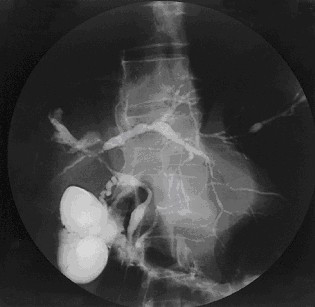Nephropathy, Progressive Tubulointerstitial, With Cholestatic Liver Disease

Clinical Features
In a brother and sister, Neuhaus et al. (1997) described progressive tubulointerstitial nephropathy and cholestatic liver disease. The main characteristics were progressive renal failure and elevated liver enzymes. Dialysis was started at the age of approximately 2 years and 6.5 years, respectively. Renal histology showed sclerosing glomeruli and atrophic tubules; the interstitium was fibrotic and infiltrated by lymphocytes. Endoscopic retrograde cholangiopancreatography revealed segmental irregularities and narrowing of the intrahepatic bile ducts, consistent with early primary sclerosing cholangitis. Liver histology showed enlarged portal triads, mild proliferation and inflammation of bile ducts, and fibrosis. At approximately 6 years, the girl underwent successful renal transplantation, whereas the boy was still on dialysis. The children were born of nonconsanguineous, healthy Swiss parents. Neuhaus et al. (1997) considered the cholestatic liver disease to be consistent with early primary sclerosing cholangitis (see 109720). They concluded that the association of kidney and liver disease in these sibs represented a distinct autosomal recessive entity.